
 |
 |
 |
 |
 |
 |
 |
email: roadarch@outlook.com |
 |
| Indiana Art Deco & Streamline Moderne Buildings (page 1) |
(hit "refresh" to get the most recent version of this page; click on photos for larger images)
| Fraternal Order of Eagles Anderson, IN |
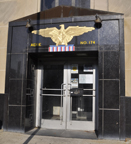 |
| This Fraternal Order of Eagles building was built by 1915. It was either dramatically remodeled or rebuilt around 1925. [map] |
| Public Swimming Pool Anderson, IN |
 |
| This Public Swimming Pool was designed by Wesley Bintz and built in 1925. It has been abandoned since 2007. For more about these pools, see the description for this one in Chaffee, MO. [map] |
| National Guard Armory Attica, IN |
|
 |
 |
 |
| This National Guard Armory was built in 1939. [map] |
| Salvation Army [gone] Bedford, IN |
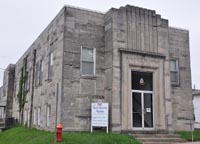 |
| This Salvation Army was built in 1930. The name above the entrance had been covered up with a sign for the address. The building was demolished in 2025. |
| Wilson Park Bedford, IN |
 |
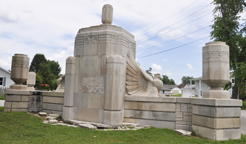 |
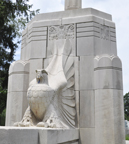 |
 |
| This limestone Wilson Park entrance gate was built in 1936. [map] |
| Century of Progress Houses Beverly Shores, IN Florida Tropical House |
 |
 |
 |
| Wieboldt-Rostone House | |
 |
 |
 |
 |
| Armco-Ferro House | |
 |
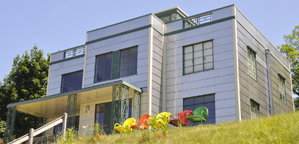 |
| House of Tomorrow | |
 |
 |
| Cypress Log Cabin |
 |
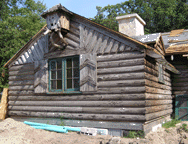 |
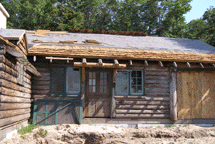 |
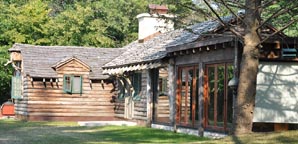 |
 |
|
The Century of Progress Houses were built in 1933 for the Chicago World's Fair. Afterwards, they were moved here by barge in 1935 by Robert Bartlett to entice buyers to his new resort community in Beverly Shores. The houses deteriorated over the years and four of the five have been restored. The House of Tomorrow is still being restored.
The Florida Tropical House was designed by Robert Law Weed for the state of Florida to promote tourism. This Art Deco style house is framed with wood and finished with concrete stucco. It is still the original color. [map] The Wieboldt-Rostone House was designed by Walter Scholer and showcased Rostone panels which were produced in Lafayette, IN. [map] The Armco-Ferro House was designed by Robert Smith, Jr. for the American Rolling Mill Company and Ferro Enamel Corporation. The intent was to showcase steel and porcelain enamel panels for residential construction. This was the first house to use frameless steel construction and an exterior sheathing of vitreous enamel which was used later for Lustron houses and gas stations. [map] The House of Tomorrow was designed by George Fred Keck. The 12-sided building used glass curtain walls on the second and third floors. They were replaced with operable windows during relocation. The original windows will be restored. The floor plan included space to park an airplane on the ground floor. For more, see this website. [map] The Cypress Log Cabin was designed by Murray D. Heatherington for the Southern Cypress Association. The goal was to demonstrate the unique qualities and many uses of cypress. The house was framed with wood and covered with cypress siding, creating a mountain lodge effect. Cypress knees decorated the house's fences, arbors, and bridges. The carvings with animal heads, reptiles, and fantasy creatures were removed during relocation. [map] |
|
Indiana (page 2) |
Indiana (page 3) |
Indiana (page 4) |
Indiana (page 5) |
Indiana (page 6) |
Art Deco Buildings Main Page |
| RoadsideArchitecture.com |
Copyright. All photos at this website are copyrighted and may only be used with my consent. This includes posting them at Facebook, Pinterest, blogs, other websites, personal use, etc. Tips & Updates. If you have suggestions about places that I haven't covered, historical info, or updates about places/things that have been remodeled or removed, I'd love to hear from you: roadarch@outlook.com. |